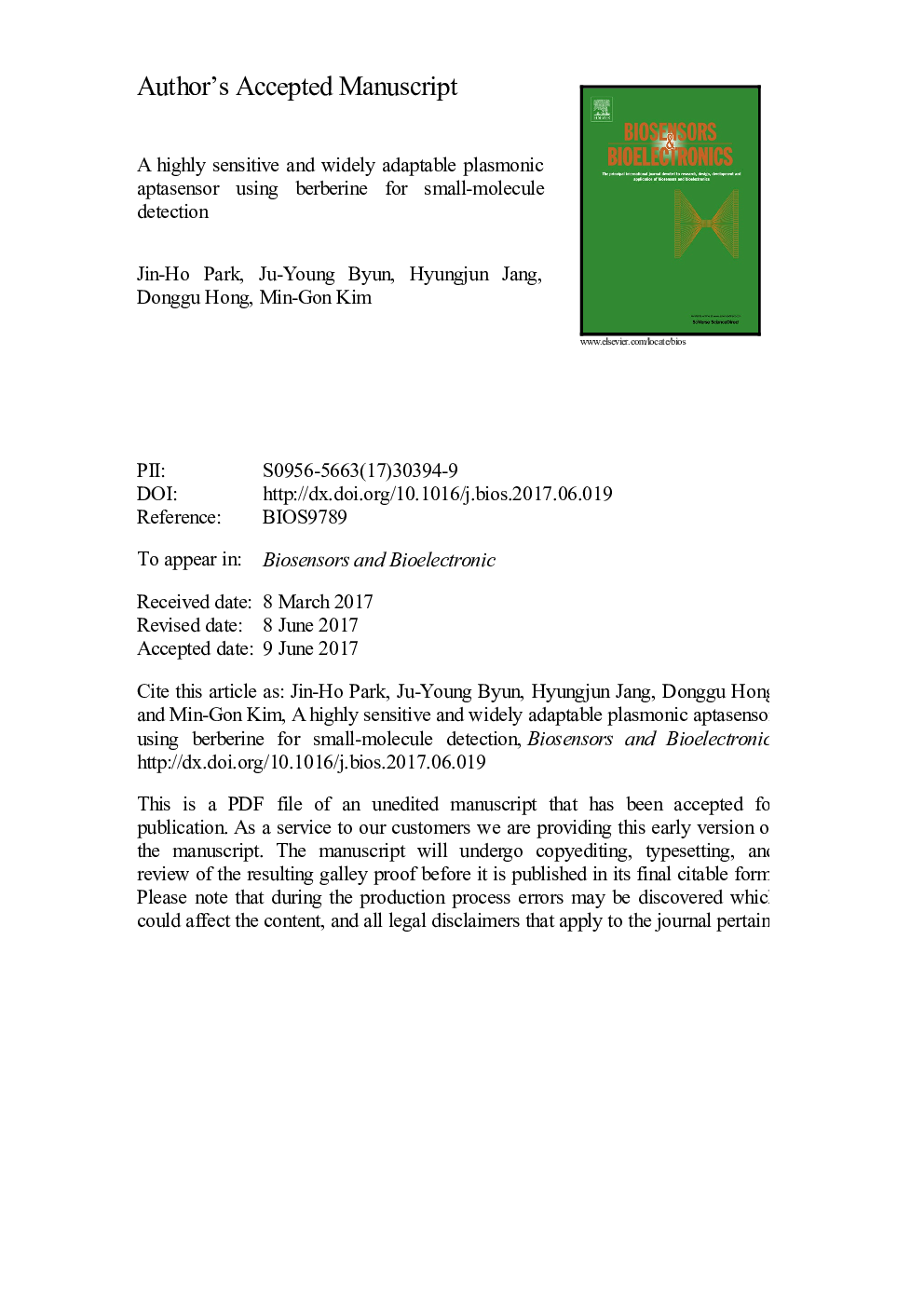| Article ID | Journal | Published Year | Pages | File Type |
|---|---|---|---|---|
| 5030993 | Biosensors and Bioelectronics | 2017 | 22 Pages |
Abstract
Localized surface plasmon resonance (LSPR) biosensors allow label-free detection of small molecules in molecular binding events; however, they are limited by a relatively low sensitivity and narrow dynamic range. Here, we report highly sensitive small-molecule detection by LSPR peak shift exploiting the G-quadruplex (GQx) structure-binding characteristic of known GQx binders to enhance the LSPR signal of a plasmonic aptasensor. Six known GQx binders (thiazole orange, malachite green, crystal violet, zinc protoporphyrin IX, thioflavin T, and berberine) were tested for their ability to enhance the LSPR signal. Among these, berberine (BER) induced the largest LSPR peak shift by interacting with the GQx structure formed by the aptamer/target binding event on a gold nanorod surface. This specific binding performance was confirmed by the fluorescence signal of BER and through repeated cycles of BER addition and washing on the plasmonic sensing chip. The proposed plasmonic aptasensor respectively showed limit of detection (LOD) of 0.56, 0.63, 0.87 and 1.05 pM for ochratoxin A, aflatoxin B1, adenosine triphosphate and potassium ions, which was 1000-fold higher than that in BER-free condition, and a wide dynamic range from 10 pM to 10 μM. In addition, the proposed LSPR aptasensor could effectively be used to quantitatively analyze small molecules in real samples.
Related Topics
Physical Sciences and Engineering
Chemistry
Analytical Chemistry
Authors
Jin-Ho Park, Ju-Young Byun, Hyungjun Jang, Donggu Hong, Min-Gon Kim,
